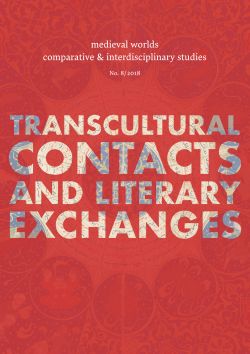 |
 |
Walter POHL – Andre GINGRICH (Eds.)
medieval worlds • no. 8 • 2018
Transcultural Contacts and Literary Exchanges
Michal Biran
S. 135 - 154 doi: 10.1553/medievalworlds_no8_2018s135
Verlag der Österreichischen Akademie der Wissenschaften doi: 10.1553/medievalworlds_no8_2018s135
Abstract:
This essay reviews the ERC-funded project Mobility, Empire and Cross-Cultural Contacts in Mongol Eurasia conducted at the Hebrew University of Jerusalem (1/2013-12/2017). The project has studied the impact of the Mongol Empire (1206-1368) on world history through the prism of mobility. It aimed to explain why, how, when, and to where people ideas and artifacts moved across Eurasia and what were the outcomes of these population movements. Guided by »the humanistic approach to world history«, namely combining a world history perspective with a close reading of multilingual primary sources, the project has created a sophisticated prosopographical database for studying these movements. The database records multilingual information about people who were active in Mongol Eurasia, currently indexing more than 13,500 persons. This unique resource enables the study of various groups of migrants (tribes, captives, experts, etc.); networks of economic and cultural transfer; and various imperial institutions (army, diplomacy, imperial sons-in-law), thereby illuminating the era’s social and cultural history. Stressing the pivotal role of the nomadic Mongols in initiating population movements, it analyses how these movements created multiple cross-cultural contacts; triggered massive ethnic, religious and geopolitical transformations, and led to a closer integration of the old world. The enhanced connectivity created both a common imperial culture – material, political, administrative – across Eurasia, and relativism of knowledge and religions. These, in turn, left a considerable imperial legacy to later polities, and helped shape the transition from the medieval to the early modern world. Yielding more than 80 publications so far, while various books, volumes and dissertations are in the making; training and grooming a considerable portion of the next generation of Mongol Empire scholars; and contributing significantly to the globalization of Mongolian studies worldwide, the project’s main legacy has been the study of the Mongol Empire on its own terms and within its full Eurasian context.
Mongol Empire; Mobility; Migration; Cross-Cultural Contacts; Digital Humanities; World History; Networks; China and the Muslim World; Islamization; Nomadic Culture Published Online:
2018/11/30 09:07:20 Object Identifier:
0xc1aa5576 0x003a16e8
Rights:All rights reserved.For questions regarding copyright and copies please contact us by email.
medieval worlds provides a forum for comparative, interdisciplinary and transcultural studies of the Middle Ages. Its aim is to overcome disciplinary boundaries, regional limits and national research traditions in Medieval Studies, to open up new spaces for discussion, and to help developing global perspectives. We focus on the period from c. 400 to 1500 CE but do not stick to rigid periodization.
medieval worlds is open to submissions of broadly comparative studies and matters of global interest, whether in single articles, companion papers, smaller clusters, or special issues on a subject of global/comparative history. We particularly invite studies of wide-ranging connectivity or comparison between different world regions.
Apart from research articles, medieval worlds publishes ongoing debates and project and conference reports on comparative medieval research.
Editor’s Preface
Walter Pohl and Ingrid Hartl
World Literature is Trans-Imperial: A Medieval and a Modern Approach
Christian Høgel
The Global Eminent Life: Sixth-Century Collected Biographies from Gregory of Tours to Huijiao of Jiaxiang Temple
James T. Palmer
The Aristotle of Pippin III. Greek Books Sent to the Frankish Court (ca. 758 AD)
Christian Gastgeber
Biblical Elements and the ‘Other’ in the Chronicon regum Legionensium
Patrick S. Marschner
“The messenger is the place of a man’s judgment”: Diplomacy between Emperors and Caliphs in the Tenth Century
Courtney Luckhardt
The Geopolitics on the Silk Road: Resurveying the Relationship of the Western Türks with Byzantium through Their Diplomatic Communications
Li Qiang and Stefanos Kordosis
Project Reports
Dynamics in Buddhist Transfer in Eastern Central Asia 6th-14th Centuries: A Project Report
BuddhistRoad Team
Mobility, Empire and Cross-Cultural Contacts in Mongol Eurasia (MONGOL)
Michal Biran
Greek into Arabic. Philosophical Concepts and Linguistic Bridges
Cristina D’Ancona, Gerhard Endress and Andrea Bozzi
Writing the History of Aristotelian Logic During the Long Ninth Century. Some Remarks and Preliminary Results
Christophe Erismann
The THESIS Project
Monica Brinzei
Origins of the Vernacular Mode: Medieval Theology, Politics and Religious Identities
Pavlína Rychterová
|




 Home
Home Print
Print
 References
References
 Share
Share
